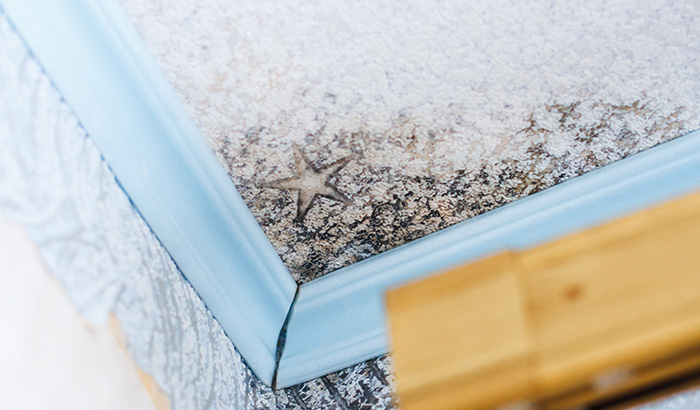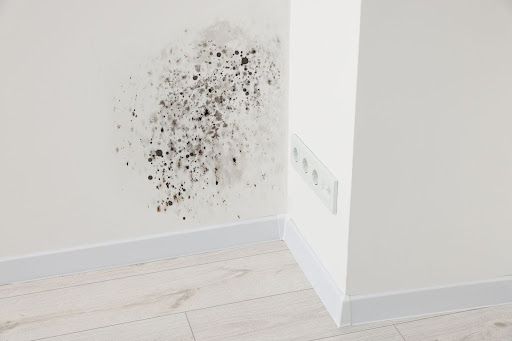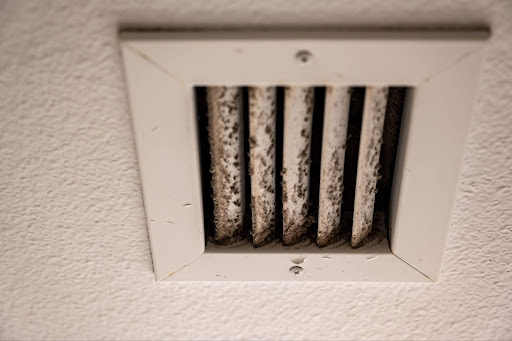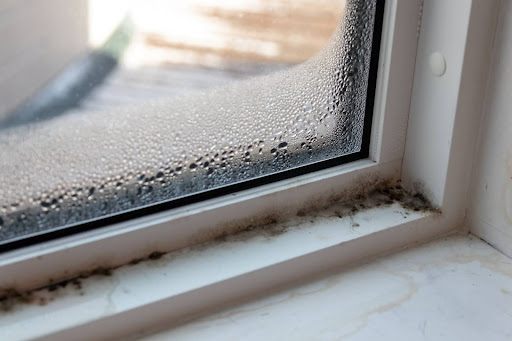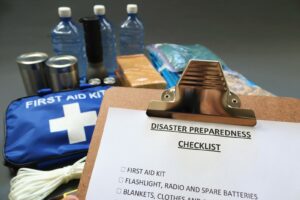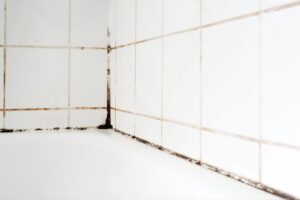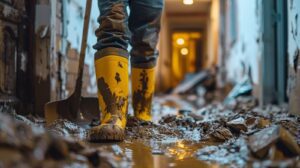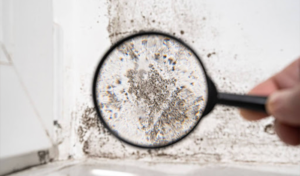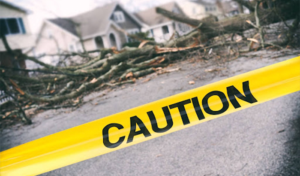Mold doesn’t discriminate when it comes to where it grows. It only requires a few key ingredients to thrive, including moisture, suitable temperatures, and organic materials. Consequently, it’s not uncommon to find mold in commercial buildings, even if it’s not immediately visible.
Throughout this blog, we will delve deeper into the dangers associated with mold in commercial spaces and discuss effective strategies for addressing and preventing mold problems, ensuring a safe, healthy, and prosperous work environment for everyone involved.
Health risks
Mold produces tiny spores that eventually become airborne. When inhaled, these spores often lead to various health problems, particularly in individuals with mold allergies or sensitivities. How severe these health issues are depends on the mold type, exposure level, and individual susceptibility.
Mold exposure manifests in various ways and often presents symptoms that mimic other common illnesses. These symptoms may include:
- Allergic Reactions: Mold spores trigger allergies, leading to sneezing, a runny or stuffy nose, itchy or watery eyes, skin rashes, and throat irritation.
- Respiratory Issues: Individuals with asthma or preexisting respiratory conditions might cough, wheeze, have chest tightness, and shortness of breath.
- Sinus Infections: Prolonged mold exposure often results in sinusitis, characterized by nasal congestion, facial pain or pressure, and headaches.
- Fungal Infections: Although rare, mold exposure can lead to fungal infections in the skin, lungs, or other organs, especially in people with compromised immune systems.
Mold-related health problems often significantly affect employees’ well-being and job performance. Such issues lead to more sick days, reduced work efficiency, and lower overall morale. Neglecting mold problems creates a negative workplace atmosphere and erodes employee trust.
Structural damage
Mold often starts its destructive journey in concealed, moisture-prone areas within your premises, such as crawl spaces, wall voids, or above ceilings. As it spreads, it silently compromises the entire building.
Mold feeds on cellulose-rich materials like wood. Over time, it leads to wood decay, weakening critical structural elements, such as support beams and framing. It also infiltrates and deteriorates drywall, causing it to discolor, soften, and crumble. In severe cases, entire sections of drywall might require replacement.
Insulation materials are not immune to mold invasions. Once inside, mold diminishes how effective insulation is, leading to poor temperature control, increased energy costs, and potential indoor air quality issues.
Even concrete and other porous materials aren’t safe from mold’s assault. It infiltrates these materials, resulting in structural damage like cracking and weakening building foundations.
The financial ramifications of mold-related structural damage quickly add up to a substantial amount for businesses. Ignoring the issue or delaying remediation leads to rising costs. These financial burdens often include:
- Remediation Expenses: Mold removal, area cleaning, and prevention measures place a strain on your budget.
- Structural Repairs: Fixing or replacing compromised structural components is a major financial commitment.
- Downtime: Mold remediation and structural repairs may necessitate temporary business closure or relocation, leading to lost revenue.
- Health-Related Costs: Mold-induced health problems among employees might result in medical expenses and potential workers’ compensation claims.
- Property Depreciation: Mold issues lower the property’s value, affecting its resale potential and investments made in it.
Regular inspections, moisture control, and immediate remediation are critical steps in mitigating structural damage and the associated financial burdens.
Legal and compliance issues
Understanding the legal and compliance aspects of mold in commercial buildings is essential to safeguarding your business from potential liabilities and legal consequences. Let’s delve into these important considerations:
1. Regulations and Laws
At the federal and state levels, numerous regulations and laws address mold in commercial properties. These regulations typically focus on indoor air quality, safety, and the responsibilities that building owners and landlords have to maintain a safe environment for occupants. Some states have specific mold-related statutes, while others incorporate mold issues within broader environmental or health codes.
2. Liability Risks
As a business owner, you might face liability risks linked to mold. If employees or customers experience health issues due to mold exposure on your premises, you could be liable for medical expenses and other damages. Moreover, mold-related lawsuits harm your business’s reputation, leading to the loss of customers and revenue.
3. Potential Legal Consequences
Neglecting mold problems leads to significant legal repercussions. Contractual disputes may also arise, especially if lease agreements include clauses related to maintenance and safety. Ignoring mold issues could trigger disagreements and legal action. Not complying with mold-related regulations may result in fines and penalties that government agencies impose.
4. Keeping Your Business Compliant and Safe
Follow these crucial steps to protect your business against these legal and compliance challenges. First, stay well-informed about federal and state regulations related to mold in commercial properties. If necessary, seek advice from legal experts to ensure full compliance with these regulations. Conduct regular mold inspections to promptly detect and address any issues.
Employee training is another key aspect — educate your staff about mold prevention techniques and proper response procedures to minimize health risks. Maintaining meticulous records is also essential; document your inspections, remediation efforts, and all communication with tenants or employees regarding mold concerns.
Finally, if you have mold problems, consider seeking guidance from mold remediation professionals who are able to assist you in effectively navigating the situation while adhering to all relevant regulations.
Mold prevention and remediation
Taking proactive measures will help you avoid the hassle and cost of mold remediation. Here are some strategies to keep mold at bay:
- Proper Ventilation: Ensure that your business premises are well-ventilated. Good airflow helps control indoor humidity levels, reducing the chances of mold growth. Make sure your HVAC systems are in good working condition, and consider using dehumidifiers in areas prone to moisture.
- Regular Inspections: Implement a schedule for routine inspections. Keep an eye out for water leaks, condensation, or any signs of moisture. Early detection is your best defense against mold.
- Moisture Control: Promptly address water leaks, spills, or any water-related issues. Maintain your plumbing systems to prevent leaks, and get repairs done as soon as you notice a problem.
- Employee Awareness: Educate your employees about the signs of mold or moisture issues. Encourage them to maintain clean, clutter-free workspaces, as clutter traps moisture and promotes mold growth.
- Use Mold-Resistant Materials: In areas prone to moisture exposure, consider using mold-resistant building materials, paints, and finishes. These materials are designed to inhibit mold growth.
It’s concerning when you come across mold in your business space, but taking the right steps will help mitigate the issue. Begin by isolating the affected area to prevent mold spores from spreading further. Next, thoroughly assess the situation, pinpoint the source of moisture that’s fueling mold growth and take steps to address it to prevent further infestation.
Depending on the extent of the mold problem, it might be best to bring in professionals for mold remediation. If you handle it internally, ensure your staff follows safety precautions, such as wearing protective gear and using appropriate cleaning agents.
Make mold a problem of the past with Total Flood & Fire Restoration
To ensure the well-being of your employees, the longevity of your business, and the safety of your commercial space, it’s essential to address mold issues promptly and professionally. That’s where Total Flood and Fire Restoration comes in.
Our expertise in mold remediation, extensive knowledge of industry regulations, and commitment to thorough cleanup make us the go-to solution for businesses facing mold challenges.
If you discover or suspect mold in commercial buildings, call us right away at 385-442-9804.

